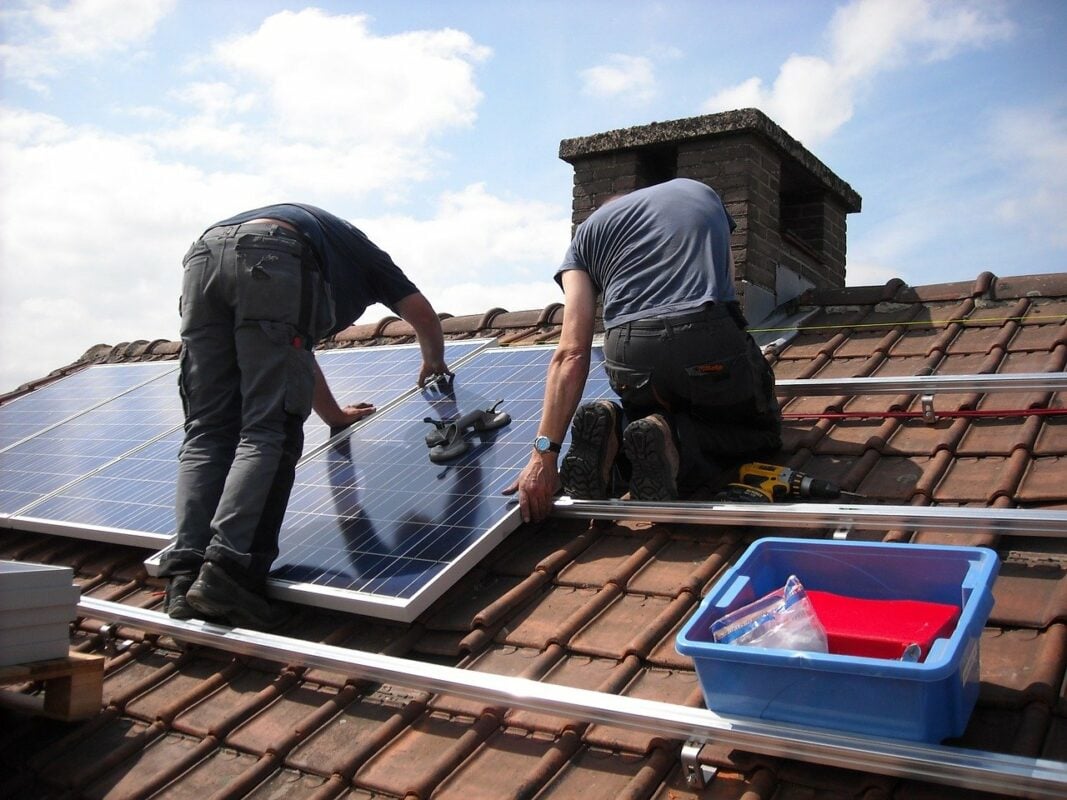
Installers experienced frustration due to complicated requirements and delays in payments. Image: Maria Godfrida (Pixabay).
The government didn’t sufficiently understand the challenges facing installers as part of the Green Homes Grant (GHG), having failed to learn from its own previous energy schemes.
That is one of the key findings of a report from the National Audit Office (NAO), aiming to identify lessons for future schemes following the early closure of the voucher segment of the GHG.
Describing the timetable for the scheme as “over-ambitious”, the government watchdog said it wasn’t executed to an acceptable standard, with this having a knock-on effect on the job creation and carbon reduction benefits originally anticipated to come from the scheme.
The Department for Business, Energy and Industrial Strategy (BEIS) only consulted with installers after the scheme was announced, limiting the opportunities to include installer views in the scheme design.
Installers subsequently reported frustrations about the complexity of the scheme and the requirement for participating traders to meet both the registration requirements and also certification for associated quality standards, with installers needing TrustMark or Microgeneration Certification Scheme (MCS) accreditation.
The costs of certification alongside the short duration of the scheme – which was expected to be six months when first announced – deterred some installers from participating, the NAO found. As of 6 November 2020, there were 248 installers registered to the scheme. By the end of the NAO’s fieldwork, there were 1,008. This echoes findings from the MCS in September 2020, ahead of the scheme's launch, with its research showing that while over 70% of installers were planning to offer GHG installations, there were significant concerns over the length of the scheme.
For installers who did participate, documentation and verifications had to be provided once compliant works had been completed, with these requirements being complicated and difficult for the homeowner and installers to get right first time. This led to homeowners and installers being asked for further information, which took time and caused frustration.
Alongside this, there was further frustration due to delays in payment. This was widely discussed at the time, with many installers reporting in January they had not been paid while members were waiting for months to be issued vouchers, prompting calls from installers for there to be changes to solve the “desperate situation”.
From October 2020 to April 2021, over 3,000 complaints were made to BEIS and the scheme administrator, the NAO found, with the average time to issue a voucher to homeowners who applied in October 2020 being 137 days.
By the end of March 2021, £22.5 million had been paid out to installers and £13.4 million had been allocated for work completed. As of August 2021, £82.7 million was paid out to installers in 2021-22, with BEIS estimating a further £137.3 million will be spent during 2021-22 as more vouchers are redeemed.
BEIS is estimating that in total it will spend £313.8 million on the scheme, although this includes £50.5 million on administration and programme costs, representing 16% of the total spend.
In its recommendations to BEIS, the NAO said the department should engage with the installer market on the proposed design of any future scheme and base its planning on a realistic assessment of how long it will take different segments of the market to mobilise the skills and capacity needed to meet demand across all parts of the country.
Additionally, in designing a scheme BEIS should test from the start what is being expected of households and installers, with an aim of simplifying the process and enabling all parties to complete stages right first time as far as possible.
It should also ensure it deploys, alongside policy makers, people with technical, delivery and commercial experience to provide input at the earliest stages in the conception of new schemes.
While the voucher segment of the Green Homes Grant closed earlier this year, the Local Authority Delivery – which includes solar PV as an eligible technology – is still running, with BEIS unveiling an additional £300 million to be split between the scheme and the Social Housing Decarbonisation Fund Demonstrator in March in a bid to provide certainty to installers.
In May, it was revealed that only four solar PV systems had been installed under the Local Authority Delivery, however this rose to 109 in July.
Between the Public Sector Decarbonisation Scheme, the Local Authority Delivery of the Green Homes Grant and Social Housing Decarbonisation Fund Demonstrator, BEIS is expecting to support 42,000 jobs in the 12 months following their implementation, the NAO said in its report. These figures are based on economic modelling from academic research which estimates the number of jobs supported by the amount spent, althoug the assumptions in the model have not been audited by the NAO.
BEIS also anticipates that the initial Local Authority Delivery Scheme and Social Housing Decarbonisation Fund Demonstrator will install 109,000 measures in 57,000 homes.

